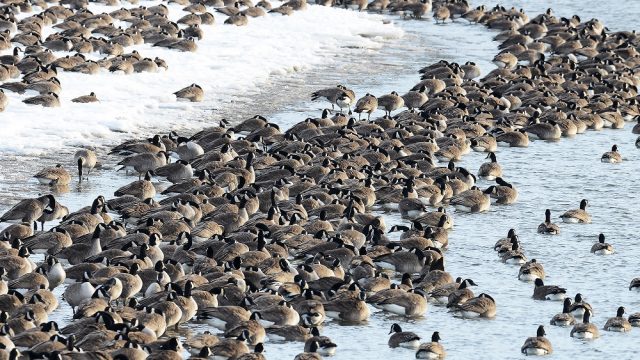Doug Leier Column: Biological Surveys About More Than Just Hunting

One of the most interesting facets of being an outreach biologist is the variety of work involved.
A few weeks back in I assisted with the North Dakota Game and Fish Department’s mid-winter waterfowl survey, as I’ve done in the past, and which biologists across the nation do each year.
While the bulk of North Dakota’s survey is based on an aerial flight over the Missouri River, my role was to check for birds in the Fargo area where open water might still have existed on rivers. And I did find some pockets of mallards and Canada geese, though the numbers are barely significant compared to the thousands of birds that are often counted on the Missouri in the central part of the state.
The midwinter waterfowl survey is a nationwide effort to assess winter distribution and abundance of waterfowl across North America. It got its start in the 1930s, and for awhile it was a major source of information for developing hunting regulations until breeding ground surveys were initiated in 1955.
It’s conducted in all states and parts of Canada during the same week, the first full week in January, to minimiz the prospect of birds counted in North Dakota and then counted again later in more southern locale.
In North Dakota this year, the midwinter waterfowl survey indicated 71,500 geese and ducks were still in the state in early January. That may seem like a lot, but just two years ago during the abnormally warm January of 2012, the tally was a record 279,000.
Conversely, in 2009, less than 10,000 Canada geese showed up in the count.
Mike Szymanski, Game and Fish migratory game bird biologist, said an estimated 40,700 Canada geese were observed on the Missouri River this year, and another 12,000 were scattered on Nelson Lake in Oliver County.
“Conditions leading up to this year’s survey were colder than normal,” Szymanski said. “Most waterfowl were pushed from North Dakota just prior to Thanksgiving, with the exception of those using the Missouri River System.”
In North Dakota, mallards and Canada geese from three different subpopulations make up the bulk of the birds hanging around in January.
Prior to 1998, it was rare to count more than 10,000 Canada geese on the Missouri River during the survey. In the last decade, the average number is much higher.
Although weather – both temperature and the amount of snow covering grain fields where most of the wintering waterfowl feed — is a factor in the number of Canada geese showing up in midwinter survey results, more geese are counted today than 20 years ago and earlier simply because there are so many more birds.
The importance of biological surveys is more than just the popular hunting season forecasts generated by summer pheasant and duck brood tallies. Off-season winter counts such as the midwinter waterfowl survey also provide a better assessment of available winter habitat and population trends for waterfowl.
As a biologist, I certainly enjoy seeing first-hand the hardy mallards still feeding on an oasis of field corn and dabbling in a pocket of open water near a rock rapids on the Red River.
It’s kind of like the ducks and geese are a kindred spirit, having the means and ability to migrate south, but choosing to stay here all winter like many of us.
Makes a shivering biologist wonder just what they are thinking, too.




